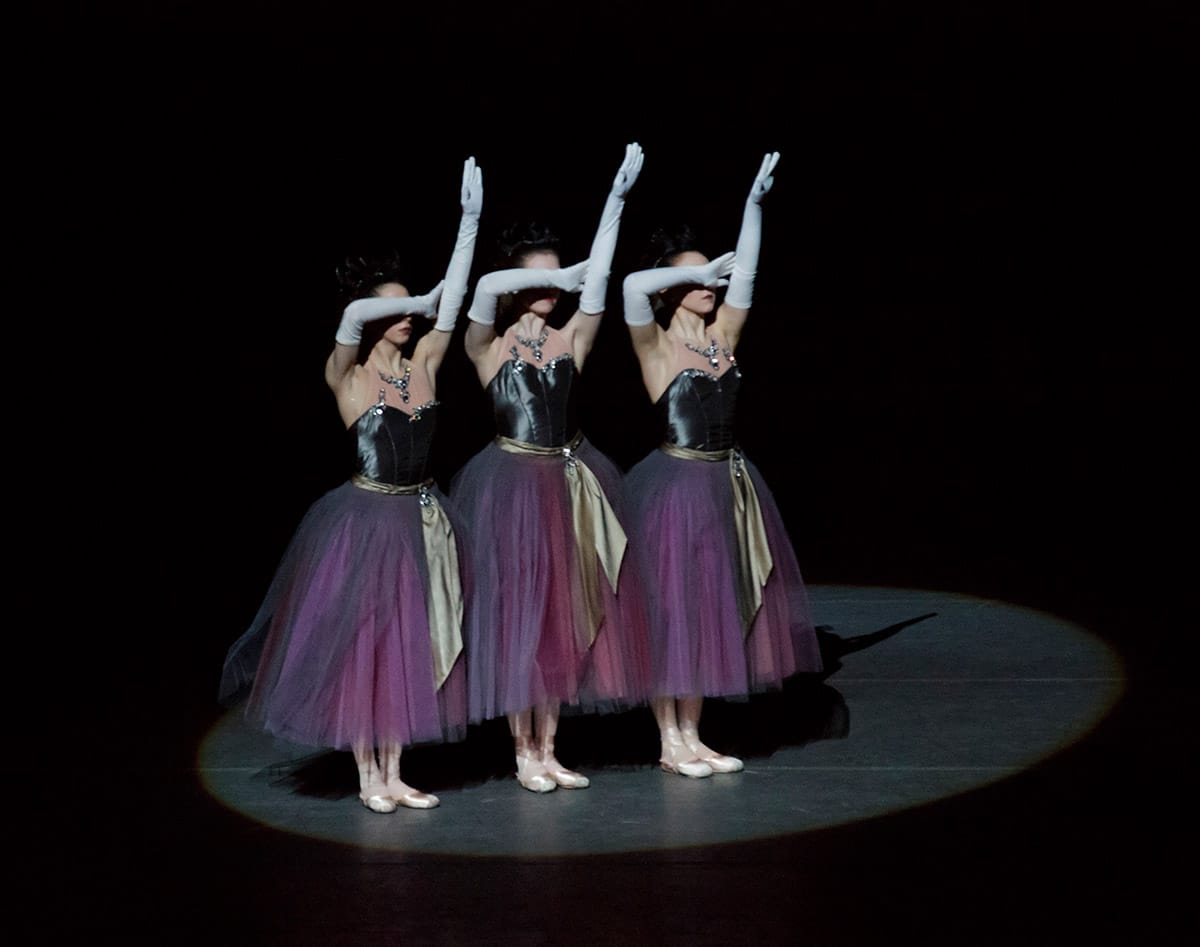Opening Night Feast

"Concerto Barocco", "Tschaikovsky Pas de Deux", "La Valse", "Symphony in Three Movements"
New York City Ballet
David H. Koch Theater
New York, NY
April 28, 2009
The New York City Ballet opened it Spring season in grand style with four Balanchine ballets, including some of his absolute best. Ballet doesn't come any better than the opening "Concerto Barocco", with its everchanging, always new choreographic patterns. Wendy Whelan with the dignified and elegant Albert Evans danced the central pas de deux. Whelan has refined her dancing down to the absolute--there seems to be nothing between her, the music, and the choreography. She combined a sculptural way of moving with a sense of, not weightlessness, but of not actually touching the floor, and danced like a piece of luminous taffy. Ellen Bar made her debut as the second violin, and danced with an intriguing passion, but seemed very aware of the audience, at times displaying the steps rather than losing herself in them.
This was followed by the bravura "Tschaikovsky Pas de Deux", which proves that flash does not always equal vulgarity. Ana Sophia Scheller and Gonzalo Garcia were the young lovers, and each danced their solos brilliantly. Garcia has a somewhat old fashioned build, with developed thighs, which give his dancing a welcome weight and gravity. He as yet is not the most secure of partners, and the flying leaps were somewhat careful. Scheller is another old fashioned dancer in that nothing is exaggerated and everything is beautifully placed. They did, though, give the impression that they had rehearsed separately and only just met before the performance, and the joyous exuberance that a great performance of this pas de deux can have was somewhat muted.
There was nothing muted about the surrealistic "La Valse", which featured Janie Taylor and Sébastien Marcovici. She was no innocent victim, but a jaded little moth rushing towards the flame. It was a performance that transcended the stage;watching it seemed almost voyeuristic, like looking at someone's inner soul burn out. It was almost shocking to see her smiling at the ovation she received, since her destruction had been so vivid. Marcovici, too, gave his young man a haunted overtone, as if he were complicit in her doom, until the very end when he kissed her hand, in an abject, almost apologetic gesture. Philip Neal gave Death an elegant menace, but there was nothing calming or comforting about him.
The three fates set the tone, with their sharp, mysterious presence, and the three young couples made their brief dances indelibly distinctive. Tyler Angle, especially, stood out as the romantic suitor captured by the fates. This was a haunting and disturbing performance by all involved, a true grown-up ballet.
"Symphony in Three Movements" has become a young person's ballet, all bounding jumps and pony tails. No one jumps better that Daniel Ulbricht, who combines a powerful and slashing upper body with an uncanny ability to hover in the air, while seeming to have the time of his life. Sterling Hyltin was his joyful partner. The central pas de deux was danced by Abi Stafford and the stalwart Jared Angle. The snaky faux-orientalism would not seem to suit the forthright Stafford, but she gave it an innocent, exploratory air that avoided any hint of kitsch and it was a fresh and lovely performance.
copyright © 2009 by Mary Cargill



